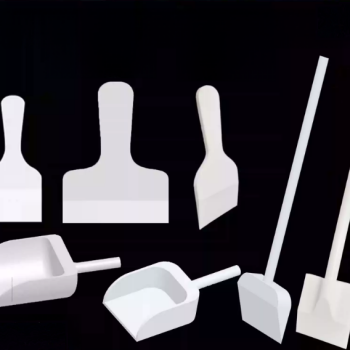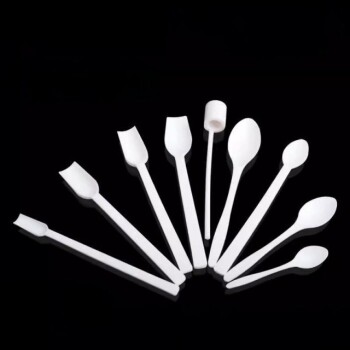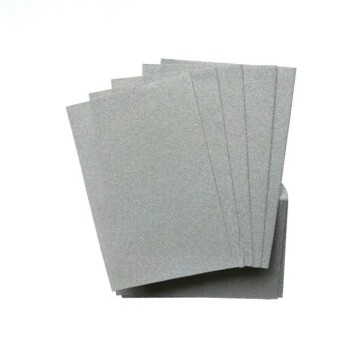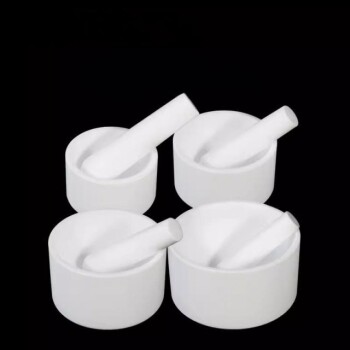Introduction to Spark Plasma Sintering (SPS) Furnaces
Welcome to a comprehensive exploration of Spark Plasma Sintering (SPS) furnaces, an innovative technology that is revolutionizing the field of material science. SPS represents a significant leap forward in the sintering process, offering unparalleled speed, efficiency, and precision. This article delves into the fundamental principles of SPS, distinguishing it from traditional sintering methods, and highlights its transformative impact on material processing and manufacturing. Join us as we uncover the mechanisms, advantages, and wide-ranging applications of SPS technology, and how it is poised to shape the future of material science.
The Mechanism of Spark Plasma Sintering
Spark Plasma Sintering (SPS) is a sophisticated sintering technique that leverages direct current pulses to generate a spark plasma, facilitating the densification of powder materials into bulk solids with high homogeneity and density. This process involves the application of high-energy pulsed currents and uniaxial pressure to the powder within a die, creating conditions of extreme temperature and pressure that promote rapid sintering.
Detailed Explanation of the SPS Process
The SPS process begins with the placement of a powder sample into a graphite die, which is then subjected to a uniaxial force applied by punches at both ends. A direct current (DC) is passed through the die and the powder, creating a spark plasma between the powder particles. This plasma is generated by the high-energy pulses of the DC current, which ionize the gas between the particles, forming a conductive path. The spark plasma results in localized high temperatures, exceeding 10,000°C, which rapidly heat the particles and induce melting at their points of contact.
The high temperatures and pressures created by the spark plasma and the applied mechanical force lead to the formation of necks between the particles. These necks grow and eventually merge, leading to densification and the formation of a solid mass with high density and fine grain structure. The entire process occurs in a controlled atmosphere, typically a vacuum or inert gas environment, to prevent oxidation and ensure the purity of the final product.
Role of High-Energy Pulsed Current
The high-energy pulsed current in SPS plays a crucial role in the sintering process. It not only generates the spark plasma but also contributes to several key mechanisms that enhance sintering:
- Surface Oxide Removal: The high-energy pulses can break down surface oxides on the particles, exposing fresh surfaces that can bond more effectively.
- Electromigration: The electric field induced by the current can cause atomic migration along the particle surfaces and at the grain boundaries, aiding in densification.
- Electroplasticity: The application of electric fields can induce plastic deformation in the particles, facilitating their rearrangement and bonding.
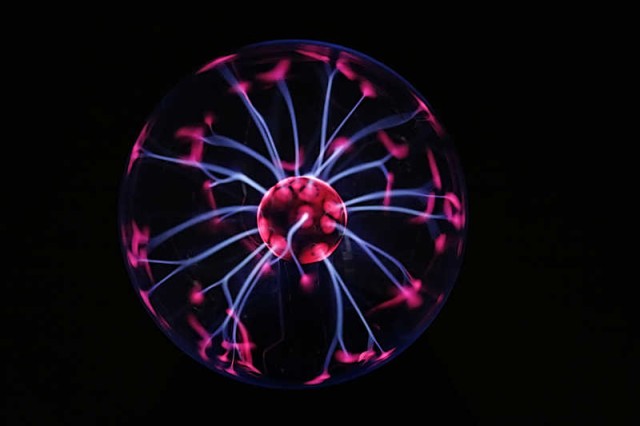
Advantages of Spark Plasma Sintering
SPS offers several advantages over traditional sintering methods:
- High Heating Rates: SPS can achieve heating rates up to 1000°C/min, significantly reducing the processing time.
- Low Sintering Temperatures: The use of spark plasma allows for sintering at lower temperatures compared to conventional methods, preserving the microstructure and properties of the material.
- Energy Efficiency: The rapid heating and short processing times result in lower energy consumption and cost.
- Enhanced Material Properties: The fine grain structure and high density achieved through SPS lead to improved mechanical, electrical, and thermal properties in the final product.
Applications of SPS
SPS has found applications in various fields, including materials science, nanotechnology, and engineering. It is particularly useful for the fabrication of advanced materials such as ceramics, metals, and composites, where high density, fine grain size, and enhanced properties are critical. The ability to precisely control the temperature, pressure, and heating rate during the SPS process makes it a versatile and powerful tool for the development of new and improved materials.
In summary, Spark Plasma Sintering is a cutting-edge technique that utilizes direct current pulses to generate spark plasma, enabling the rapid and efficient sintering of powder materials into high-quality bulk solids. Its unique mechanisms and advantages make it a valuable tool in the advancement of material science and technology.
Advantages of Using SPS Furnaces
Spark Plasma Sintering (SPS) technology has revolutionized the field of material processing and manufacturing, offering a range of advantages that traditional sintering methods cannot match. This section delves into the key benefits of SPS, including rapid sintering speeds, fine-grain sintering, and density control, and explores how these advantages translate into practical benefits in various applications.
Rapid Sintering Speeds
One of the most significant advantages of SPS is its ability to achieve rapid sintering speeds. Unlike conventional sintering processes that can take hours or even days, SPS can complete the sintering process in just a few minutes. This is due to the internal heating of the sample, which is a stark contrast to the external heating methods used in traditional sintering. The rapid heating rates, which can exceed 300°C/minute, allow for temperatures of 1200°C to be reached in as little as 4 minutes. This rapid sintering capability not only increases productivity but also enables extremely rapid material development, significantly reducing cycle times and enhancing overall efficiency.
Fine-Grain Sintering
SPS technology facilitates fine-grain sintering, which is crucial for improving the mechanical properties of materials. The rapid temperature rise inhibits grain growth, allowing for the regulation of the microstructure and the preparation of sintered bodies with desired properties. This is particularly beneficial for the production of nanocrystalline materials, where maintaining a fine grain size is essential. The ability to control grain size at such a precise level translates into materials with enhanced strength, toughness, and other mechanical properties.
Density Control
Another notable advantage of SPS is its ability to control density with high precision. SPS can produce both porous and fully dense parts, offering a wide range of density control options. This versatility is invaluable in applications where specific density levels are required for optimal performance. The simultaneous application of temperature and pressure during the sintering process ensures high densification, resulting in dense structures that are free from porosity and defects.
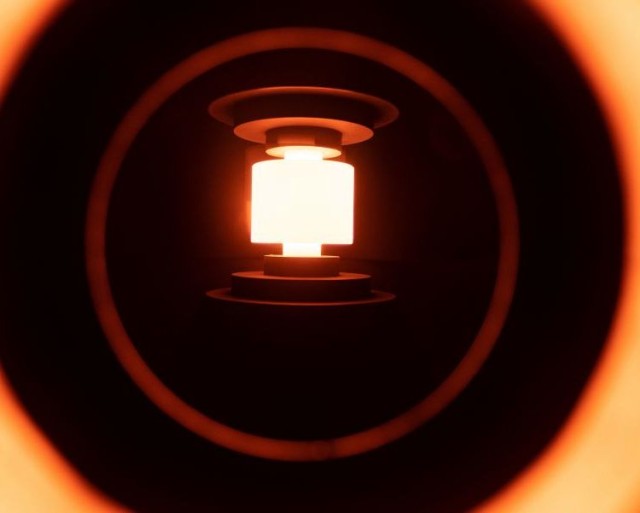
Versatility
SPS is an extremely versatile sintering method, capable of densifying a wide range of materials, including low melting point metals, ultra-high temperature ceramics, and even bonding dissimilar materials requiring nonuniform temperature profiles. This versatility is unmatched by other sintering processes, making SPS a preferred choice for advanced material applications. Whether it's for energy storage materials, biomedical engineering, advanced ceramics, intermetallics, or composites, SPS can handle the requirements with ease.
High-Precision Process Control
SPS offers high-precision process control, allowing for the fine-tuning of sintering parameters such as temperature and pressure. This level of control ensures the best possible outcome for the sintered parts, enabling the creation of unique chemistries and engineered structures within materials that would be lost in conventional liquid melt processes. The ability to maintain the natural state of raw materials while achieving high density and gradient sintering materials makes SPS a superior choice for complex workpieces.
Applications of SPS
The advantages of SPS have led to its application in various fields, including:
- Energy Storage: SPS is used in the production of high-capacity lithium-ion batteries and other advanced energy storage materials, leveraging its rapid sintering and fine-grain capabilities.
- Biomedical Engineering: Porous ceramics for drug delivery and scaffolds for tissue engineering benefit from SPS's ability to create materials with controlled porosity and high density.
- Advanced Ceramics: High-temperature superconductors and high-performance piezoelectric ceramics are produced using SPS, taking advantage of its low sintering temperatures and fine-grain sintering.
- Intermetallics: Advanced alloys with improved mechanical, thermal, and electrical properties are developed using SPS, thanks to its versatility and high-precision process control.
- Composites: Reinforced ceramics and metals with enhanced mechanical properties are created using SPS, utilizing its density control and rapid sintering capabilities.
In conclusion, SPS technology offers a range of advantages that make it a superior choice for material processing and manufacturing. Its rapid sintering speeds, fine-grain sintering, density control, versatility, and high-precision process control translate into practical benefits that enhance productivity, material properties, and application potential. Whether it's for advanced materials, complex workpieces, or high-performance applications, SPS stands out as a cutting-edge technology that continues to drive innovation in the field of material science.
Applications of SPS Technology
Spark Plasma Sintering (SPS) technology has emerged as a transformative method in the field of material science, enabling the creation of advanced materials with unique properties and applications. This technology combines plasma activation and hot pressing, offering advantages such as rapid heating, short sintering times, and precise control over the sintering environment. These features make SPS particularly suitable for processing a diverse array of materials, including nanophase materials, functionally graded materials, and medical implants.
Sintering of Nanophase Materials
One of the most significant applications of SPS is in the synthesis of nanophase materials. The rapid heating and short processing times inherent to SPS help to inhibit grain growth, which is crucial for maintaining the nanoscale structure of materials. For instance, SPS has been successfully used to produce nanocrystalline metals and ceramics with enhanced mechanical, electrical, and magnetic properties. The ability to retain nanoscale features post-sintering is particularly beneficial for materials that exhibit size-dependent properties, such as increased strength and improved catalytic activity.
Functionally Graded Materials
Functionally Graded Materials (FGMs) are composites whose properties vary gradually from one surface to another, designed to optimize performance under specific conditions. SPS is uniquely suited for the fabrication of FGMs due to its ability to control the temperature and pressure gradients during the sintering process. This allows for the creation of materials with tailored property profiles, such as thermal barrier coatings, wear-resistant surfaces, and biocompatible interfaces in medical devices. The controlled sintering conditions in SPS ensure that the material properties can be precisely graded without the need for complex post-processing steps.
Medical Implants
The biomedical sector has also benefited from the application of SPS technology. Medical implants, such as hip and knee replacements, require materials that are both biocompatible and mechanically robust. SPS allows for the sintering of biocompatible metals and ceramics at lower temperatures and shorter times compared to traditional methods, preserving the material's original properties. Additionally, SPS can be used to fabricate porous structures that facilitate bone ingrowth, improving the longevity and functionality of implants. The ability to control the porosity and composition of these materials makes SPS an invaluable tool in the development of next-generation medical implants.
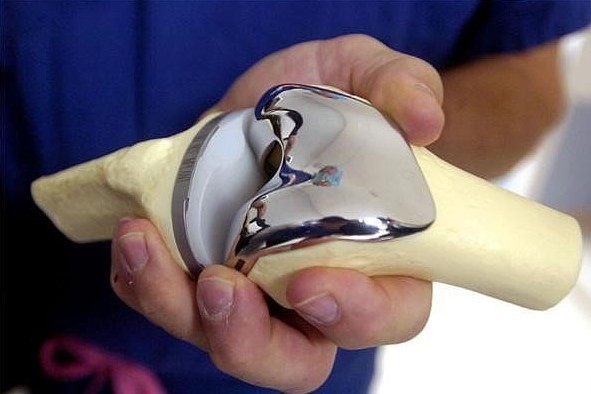
Case Studies and Real-World Examples
Several case studies highlight the efficacy of SPS in real-world applications. For example, SPS has been used to produce high-performance thermoelectric materials, which are crucial for energy harvesting and cooling applications. The rapid sintering process allows for the preservation of nanostructures that enhance the thermoelectric properties of materials like bismuth telluride. Additionally, SPS has been employed in the fabrication of advanced ceramic composites for aerospace applications, where the ability to control the microstructure and composition is essential for achieving high-temperature stability and mechanical integrity.
In conclusion, SPS technology offers a versatile and efficient approach to material synthesis, with applications spanning from nanomaterials to medical implants. The ability to control sintering conditions precisely makes SPS a valuable tool for researchers and industry alike, driving innovation in material science and engineering. As the technology continues to evolve, it is likely that new and exciting applications of SPS will emerge, further expanding its impact on various sectors.
Technical Specifications and Features of SPS Furnaces
Spark Plasma Sintering (SPS) is a sophisticated sintering technique known for its efficiency and effectiveness in producing high-quality sintered materials. This section delves into the technical specifications and features of SPS furnaces, highlighting their unique capabilities in terms of heating and cooling rates, temperature control, and system components.
Heating and Cooling Rates
One of the standout features of SPS furnaces is their ability to achieve extremely high heating and cooling rates. Typically, these furnaces can heat materials at rates exceeding 500°C per minute. This rapid heating is facilitated by the Joule heating effect, where the graphite mold and the powder briquette (if conducting) are heated directly through the application of a pulsed DC current. The internal nature of this heat generation allows for efficient and rapid temperature increases.
Similarly, the cooling rates in SPS furnaces are equally impressive, often reaching up to 500 K/min. This rapid cooling capability is crucial for preserving the microstructural integrity of the sintered materials, preventing grain growth, and enhancing the overall quality of the final product.
Temperature Control
Temperature control in SPS furnaces is precise and highly automated. The sintering system is equipped with advanced control mechanisms that allow for automated program control of sintering temperature, pressure, and current. This level of control ensures that the sintering process is consistent and reproducible, which is essential for achieving uniform and high-quality sintered products.
The use of thermocouples and infrared thermometers further enhances temperature monitoring and control. These sensors provide real-time temperature data, allowing for immediate adjustments to the sintering parameters if necessary. This level of precision is particularly important for sintering materials with specific temperature requirements.
Components of an SPS System
An SPS system comprises several key components that work in unison to facilitate the sintering process. These components include:
- Furnace Body and Frame: The furnace body is designed to withstand high temperatures and pressures, ensuring the structural integrity of the system during sintering.
- Vacuum System and Inflation Device: These components allow for the control of the sintering atmosphere, which can be adjusted to vacuum, argon, or other suitable gases.
- Pressurization System: This system applies the necessary pressure to the graphite mold, ensuring uniform compaction of the powder material.
- Graphite Mold: The graphite mold is a critical component that can withstand high pressures and temperatures. It typically has a through-hole for inserting a temperature-measuring thermocouple.
- Water Cooling System: This system is essential for rapid cooling of the furnace after the sintering process, enhancing the efficiency of the system.
- Pulse DC Power Supply: This powers the Joule heating process, providing the necessary energy for rapid and efficient heating.
- Control System: The control system is the brain of the SPS furnace, managing all the automated processes and ensuring that the sintering parameters are maintained accurately.
- Safety Protection System: This system includes safety shutdown functions that activate in case of abnormal conditions, such as water temperature issues or mold damage, ensuring the safety and reliability of the equipment.
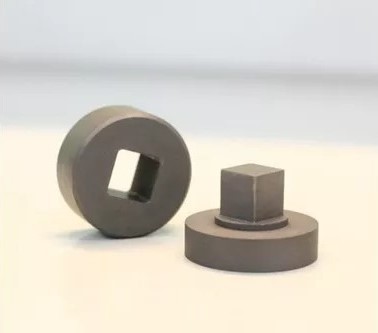
Contribution to Efficiency and Effectiveness
The technical specifications and features of SPS furnaces significantly contribute to their efficiency and effectiveness in the sintering process. The rapid heating and cooling rates, combined with precise temperature control and a comprehensive system of components, allow for:
- Rapid Sintering: The ability to achieve fully dense sintered materials in a matter of minutes, compared to several hours required by conventional methods like hot pressing and pressureless sintering.
- Purification and Activation Sintering: The process can remove adsorbed gases and oxide films from particle surfaces, enhancing the sintering of difficult-to-sinter materials.
- Fine-Grain Sintering: The rapid temperature rise inhibits grain growth, allowing for the preparation of nanocrystalline materials and the regulation of microstructures.
- Wide-Range Temperature Sintering: The ability to sinter materials over a wide temperature range, from low temperatures up to 2300°C.
- Density Control Sintering: Flexibility in controlling the density of the sintered materials, from porous to fully dense bodies.
- Temperature Gradient Sintering: The capability to create temperature gradients within the mold, enabling the simultaneous sintering of materials with different melting points.
In conclusion, the technical specifications and features of SPS furnaces make them a highly efficient and effective tool for the sintering of a wide range of materials. Their rapid heating and cooling rates, precise temperature control, and comprehensive system components ensure the production of high-quality sintered products with consistent and reproducible results.
Comparison with Traditional Sintering Methods
Spark Plasma Sintering (SPS) represents a significant advancement in the field of material sintering, offering a range of advantages over traditional methods such as hot pressing and Hot Isostatic Pressing (HIP). Understanding the pros and cons of each method can help in determining the most suitable approach for specific manufacturing needs.
Hot Pressing
Hot pressing is a conventional method where materials are simultaneously subjected to heat and uniaxial pressure. This method is effective for achieving high densities and improving mechanical properties. However, it has several limitations:
- Long Sintering Times: Hot pressing typically requires several hours to achieve full densification, which can be a significant drawback in terms of production efficiency.
- Limited Sample Size: The uniaxial pressure application restricts the size and shape of the samples, making it less versatile for industrial applications.
- Uniformity Issues: Achieving uniform heating and pressure distribution can be challenging, especially in larger samples.
Hot Isostatic Pressing (HIP)
HIP is a more advanced technique that applies isostatic pressure in a pressurized gas environment, typically argon. This method offers several advantages:
- High Densification: HIP can achieve near-net shape components with high density and excellent mechanical properties.
- Versatility: It is suitable for a wide range of materials, including metals, ceramics, and composites.
- Uniform Pressure Distribution: The isostatic pressure ensures uniform distribution, leading to consistent results.
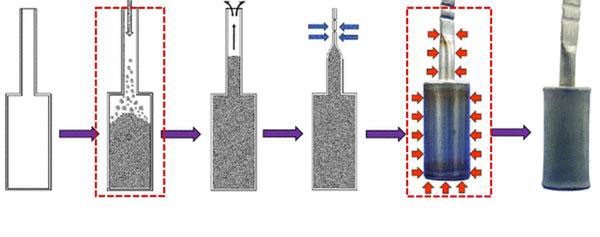
However, HIP also has its drawbacks:
- High Capital Costs: The equipment required for HIP is expensive, which can be a barrier for smaller manufacturers.
- Long Cycle Times: Similar to hot pressing, HIP involves lengthy cycle times, which can impact production rates.
- Complex Setup: The process requires careful setup and monitoring, adding to the complexity of operations.
Spark Plasma Sintering (SPS)
SPS is a field-assisted sintering technique that combines the advantages of both hot pressing and HIP while mitigating their limitations. Key features of SPS include:
- Rapid Sintering: SPS can achieve densification in minutes, significantly reducing production times. The heating rate can reach up to 500°C/min, making it one of the fastest sintering methods.
- Fine-Grain Sintering: The rapid heating inhibits grain growth, allowing for the production of nanocrystalline materials and precise microstructure control.
- Wide Temperature Range: SPS can operate from low temperatures to as high as 2300°C, making it versatile for a variety of materials.
- Density Control: SPS allows for easy density control, from porous to fully dense sintered bodies.
- Temperature Gradient Sintering: The ability to create temperature gradients within the mold enables the simultaneous sintering of materials with different melting points, useful for functionally graded materials.
Advantages of SPS Over Traditional Methods
- Efficiency: The rapid sintering times of SPS significantly enhance production efficiency, reducing energy consumption and lowering costs.
- Versatility: SPS is suitable for a wide range of materials, including those that are difficult to sinter using traditional methods.
- Microstructure Control: The ability to control microstructures at the nanoscale makes SPS ideal for advanced materials with tailored properties.
- Cost-Effectiveness: While SPS equipment has a higher initial cost, the reduced cycle times and energy consumption make it more cost-effective in the long run.
- Environmental Benefits: Shorter processing times and lower energy usage contribute to environmental sustainability.
In conclusion, while traditional sintering methods like hot pressing and HIP have their merits, SPS offers a compelling alternative with its rapid processing, versatility, and ability to produce high-quality, advanced materials. For manufacturers looking to enhance their production capabilities, SPS represents a significant technological leap forward.
Future Trends and Innovations in SPS Technology
Spark Plasma Sintering (SPS) technology has emerged as a transformative approach in material science, offering rapid sintering and densification capabilities, particularly for refractory materials, metastable phases, and nanomaterials. As industries continue to explore and integrate SPS technology, several emerging trends and potential future developments are poised to significantly impact various sectors and advance the field of material science.
Advancements in Material Synthesis
One of the most promising aspects of SPS technology is its ability to synthesize powders and bulk materials that are challenging to obtain through conventional methods. For instance, SPS has been utilized to produce ultra-high temperature ZrC material powder, achieving highly pure cubic ZrC with a grain size of approximately 100 nm. This capability opens up new avenues for creating advanced materials with unique properties, which can be applied in aerospace, electronics, and other high-tech industries.
Enhanced Material Joining Techniques
SPS technology is also revolutionizing material joining (welding) techniques. Traditional methods often struggle with ceramic-ceramic and ceramic-metal connections, especially without an intermediate layer. SPS enables direct bonding through self-diffusion, a process significantly enhanced by the electric field. For example, SiC/SiC connections have been successfully achieved under conditions of 1900°C, 5 minutes, and 3.5 MPa, resulting in joint strengths reaching 260 MPa. This advancement is crucial for engineering components in sectors like automotive, aerospace, and energy.
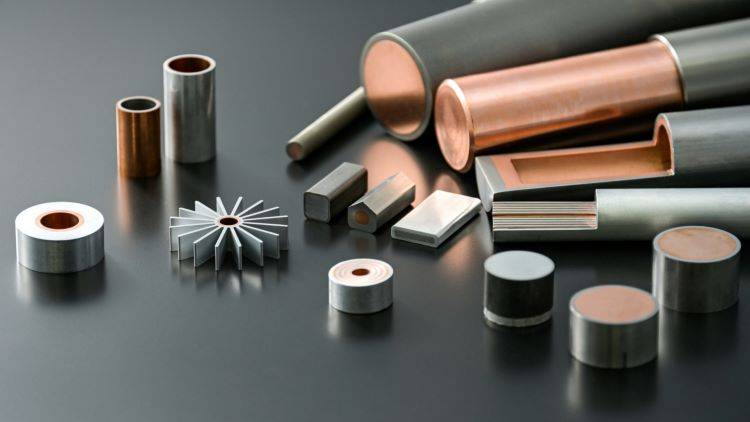
Industrialization and Scalability
The industrial application of SPS technology is gaining momentum, particularly in Japan, where it is used for producing magnetic materials, hard alloys, and gradient functional materials. Companies like Ohta Seiki have achieved mass production of 100% WC superhard materials using SPS, supplying to over 40 manufacturers globally. This trend towards industrialization is expected to continue, with more countries adopting SPS for large-scale production, enhancing efficiency and reducing costs.
Diversification of Sintered Shapes
Currently, SPS primarily produces simple cylindrical samples due to the limitations of sintering mechanisms and graphite molds. However, future developments aim to overcome these constraints, enabling the creation of complex-shaped workpieces. This diversification will expand the applicability of SPS technology, making it suitable for a broader range of engineering and manufacturing needs.
Integration with Other Technologies
The integration of SPS with other advanced technologies, such as additive manufacturing and nanotechnology, is another exciting frontier. This synergy could lead to the development of hybrid manufacturing processes, combining the precision of additive manufacturing with the densification capabilities of SPS. Such advancements could revolutionize the way materials are designed and produced, leading to unprecedented material properties and functionalities.
Environmental and Energy Considerations
SPS technology's energy-efficient and environmentally friendly nature makes it an attractive option for sustainable manufacturing. By reducing sintering times and temperatures, SPS significantly lowers energy consumption and carbon footprint. As global industries increasingly prioritize sustainability, the adoption of SPS technology is expected to rise, contributing to a greener and more sustainable future.
Conclusion
The future of SPS technology is brimming with potential, driven by advancements in material synthesis, enhanced joining techniques, industrial scalability, shape diversification, technological integration, and environmental considerations. As research and development continue to deepen, SPS technology will undoubtedly play a pivotal role in shaping the future of material science, offering innovative solutions across various industries and paving the way for new material possibilities.
Conclusion: The Impact of SPS on Material Science
In conclusion, Spark Plasma Sintering (SPS) furnaces represent a revolutionary leap in material science, offering unparalleled speed, efficiency, and precision in the sintering process. By leveraging high-energy pulsed currents, SPS not only accelerates the sintering of materials but also enhances their quality and functionality. From nanophase materials to medical implants, the applications of SPS are vast and varied, showcasing its versatility and impact across multiple industries. As we look to the future, the continuous evolution of SPS technology promises to further innovate material processing and manufacturing, solidifying its role as a cornerstone in the advancement of material science.
Related Products
- Spark Plasma Sintering Furnace SPS Furnace
- Vacuum Heat Treat and Sintering Furnace with 9MPa Air Pressure
- Vacuum Heat Treat and Pressure Sintering Furnace for High Temperature Applications
- Small Vacuum Heat Treat and Tungsten Wire Sintering Furnace
- Vacuum Hot Press Furnace Heated Vacuum Press Machine Tube Furnace
Related Articles
- Understanding Saturated Calomel Reference Electrodes: Composition, Uses, and Considerations
- Dental Sintering Furnaces The Impact on Restoration Quality and Durability
- Understanding the PECVD Method
- An In-depth Analysis of Hot Pressing Technology and Its Applications
- The Ultimate Guide to Vacuum Pressure Sintering Furnace: Benefits, Applications, and Working Principle







